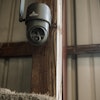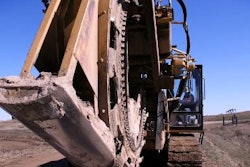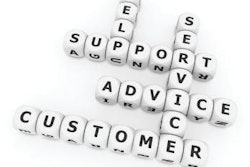
By Ralph Petta, President and CEO, Equipment Leasing and Finance Association
Certain private companies, nonprofits and tax-exempt organizations that lease equipment have been given an important advantage in implementing new accounting rules — more time. The Financial Accounting Standards Board (FASB) recently announced that the effective date of the new lease accounting standard, Accounting Standards Codification Topic 842 (ASC 842), for private companies and nonprofits has been delayed by one year, with implementation beginning after December 15, 2020.
The delay will allow smaller organizations to get their accounting processes in place while they continue to enjoy the advantages of leasing equipment. Since ASC 842 went into effect in December 2018 for public companies, FASB members have expressed that companies with limited resources can learn from the implementation performed by large public companies that possess more staffing and resources. Having additional time to get through at least one annual audit cycle and regulatory cycle should help smaller reporting companies and private companies increase the quality of their implementation.
Challenges to Implementation
For companies that are still working to implement ASC 842, the year extension is particularly welcome to address the following areas that have posed challenges.
Review of lease contracts and what constitutes a lease
These can include multiple-element arrangement contracts that combine services, software, hardware, consumables and/or financing, as well as contracts for energy such as power purchase agreements and supply contracts. Some lessees are having difficulty bifurcating the cost of the various elements such as consumables from the embedded lease of the asset.
Software implementation
Currently, most lessee-oriented software products are largely real estate focused and enterprise sized. Lease accounting software for smaller and mid-sized companies is not as fully developed. The software for larger installations can be cost prohibitive and the vendors may be overbooked with ongoing installation projects. The delay gives software solutions vendors time to review and improve their customer solutions.
Consulting with auditors on more complex technical issues
This includes challenges such as interpreting the sale leaseback accounting rules or selecting appropriate incremental borrowing rates. Limitations surrounding sale leasebacks are a little more complicated under the new standard and users who accumulate assets over a time period to aggregate into one sale-leaseback transaction for expediency purposes may want to discuss the new rules with their auditors.
Selecting an appropriate incremental borrowing rate (IBR) also seems to be generating questions in implementation, especially since smaller lenders do not often have these rates handy.
Other issues pertain to conforming and converting existing financial reporting approaches to those found in a new system. For instance, a lessee may have to convert a “full month” approach to recognizing rent expense in the first month of a lease to an actual days expense approach with a new system. This will result in an adjusting entry and the change to a new approach may require filing a Tax Accounting Method Change with the IRS.
Tax accounting
Lessees must better understand which leases are true tax leases and which are loans for tax purposes. Previously, most operating leases were considered tax leases. Now lessees must be sure to (1) properly characterize the lease and (2) separate tax deductible interest expense (which may also be limited by the new tax laws) from imputed non-tax deductible interest (in which case lessees would deduct the rents accrued to be paid).
Migration accounting issues
Assuming lessees were properly recording their operating leases before the transition, some items that were on their balance sheet (when rents paid differs from rent expense accrued - for example when a lease has a three-month rent holiday), must be rolled into the new Right of Use (ROU) asset.
Also, for lessees with deferred book gains, for instance from prior sale leasebacks, the deferred gain balance flows directly to equity on implementation. Previously, they were amortized as a reduction against current rent expense. So the lessee will see an increase in rent expense although nothing had changed with the lease - only the implementation of the new standard.
Benefits of Leasing Remain
For the nearly eight out of 10 U.S. businesses that finance their equipment acquisitions, the reasons why they do so remain intact under ASC 842:
- Tax management – Leasing allows lessees to more efficiently manage some of their taxes. When they cannot utilize all the deductions, the lessors can and are able to pass the benefits through via lower rates. It also shifts the risk of future tax-rate increases to the lessor. The Tax Cuts and Jobs Act of 2017 makes tax leasing even more important than previously.
- Finance 100% - Arrange 100% financing of equipment, software and services with 0% down payment while often still recording less than 100% on your balance sheet.
- Keep up to date and avoid residual value risk - Keep current with technology by acquiring more and better equipment more frequently compared to loan financing and avoid residual risk (because the lessor assumes that risk).
- Improved ROI/ROA compared to a loan - Rather than capitalizing 100% of an asset, a capitalized lease is generally reported at a lesser amount.
- Cash flow management - Make smaller more manageable and flexible payments while the equipment generates revenue.
- Benefit from bundling - Bundle the equipment, installation, maintenance and more into a single, easy to manage solution.
- Preserve cash and bank credit lines - Preserve available and often limited cash resources for other areas of the business, such as expansion, improvements, marketing or R&D.
- Outsource asset management - The equipment financing company can manage an organization’s equipment from delivery to disposal. A user no longer needs to figure out how to resell an asset.
- Customize terms - Set customized payments to match cash flow and even seasonal income fluctuations.
- Hedge against inflation - Lock in rates with a lease to avoid future inflation.
It’s important to check with a professional tax advisor or accountant who can address your company's particular situation. With adequate information and additional time to implement ASC 842, lessees can continue to reap the advantages of financing.
For more information on the new lease accounting rules, visit www.equipmentfinanceadvantage.org/newLAR.cfm.
Ralph Petta is the president and CEO of the Equipment Leasing and Finance Association (ELFA), the trade association that represents companies in the nearly $1 trillion equipment finance sector, which includes financial services companies and manufacturers engaged in financing capital goods. ELFA has been equipping business for success for more than 50 years. For more information on equipment financing, please visit www.EquipmentFinanceAdvantage.org.
© Equipment Leasing and Finance Association 2019. Reprinted with permission.

















